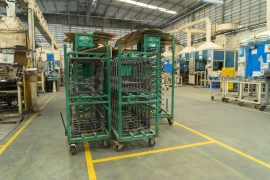In today’s fast-paced and interconnected world, the efficiency of your delivery operations can make or break your business. As an enterprise, selecting the best delivery option is crucial to meet customer expectations, maintain cost efficiency, and ensure timely delivery of products or services. The process involves understanding different delivery models, evaluating your business needs, and choosing a delivery option that aligns with your strategic goals. Here’s a detailed guide on how to evaluate and choose the best delivery option for your enterprise.
Understand Your Business Requirements
Before you begin evaluating different delivery options, it’s vital to understand your specific business requirements. This includes identifying the nature of the products or services you offer, understanding your customer demographics, and recognizing the geographic scope of your operations. For instance, a local restaurant will have different delivery needs compared to a multinational e-commerce business.
Key aspects to consider include:
- Delivery speed needed: How quickly do your customers expect delivery?
- Product type: Are your products perishable, fragile, or do they require special handling?
- Volume and frequency: How many deliveries do you need to manage daily, weekly, or monthly?
- Cost efficiency: What is your budget for delivery operations?
Explore Delivery Models
There are several delivery models to consider, each with its own set of advantages and challenges:
- In-house logistics: Managing your own fleet of vehicles and delivery staff. This model offers full control over operations but requires significant investment in vehicles, technology, and personnel.
- Outsourcing to third-party logistics (3PL): Partnering with specialized companies to handle delivery operations. This can reduce overhead costs and enhance delivery efficiency but may reduce your control over the customer service experience.
- Dropshipping: For e-commerce enterprises, using suppliers to ship products directly to customers. This eliminates the need to hold inventory but can lead to longer delivery times and less control over the shipping process.
- Hybrid model: Combining in-house and outsourced solutions. For example, using in-house resources for local deliveries and a 3PL for international shipping.
Understanding these models will help you assess which option aligns best with your operational needs and strategic goals.
Evaluate Technology Integration
Technology plays a crucial role in modern delivery operations. Evaluate delivery options that offer robust technological tools, including:
- Order management systems: To track orders from receipt through delivery.
- Route optimization software: To ensure the most efficient delivery routes, saving time and reducing fuel costs.
- Real-time tracking: Offering customers and businesses the ability to see the exact location of their orders in real-time.
- Automated dispatch and delivery systems: To improve response times and delivery efficiency.
Opt for a delivery solution that integrates seamlessly with your existing systems and offers scalability as your business grows.
Consider Customer Experience
Customer satisfaction is paramount, so consider how different delivery options impact customer experience. Fast, reliable, and transparent delivery services can significantly enhance customer loyalty and satisfaction. Ensure that whichever option you choose provides reliable customer support and allows easy resolution of delivery issues.
Assess Costs and Flexibility
Cost is a major factor in deciding between different delivery options. Evaluate the total cost implications of each model, including hidden costs like returns handling, warehousing, and lost sales due to delivery failures. Additionally, consider the flexibility of the delivery option—can it scale during peak periods? Does it allow for changes based on customer feedback and market conditions?
Regulatory Compliance and Sustainability
Ensure that your chosen delivery model complies with local, national, and international regulations related to transportation, labor, and environmental standards. Moreover, consumers are increasingly aware of environmental issues; thus, incorporating sustainable practices in your delivery operations can enhance your brand image and appeal to a broader customer base.
Test and Get Feedback
Before fully committing to a delivery option, conduct pilots or trials to gather data and feedback. Testing allows you to see how well a particular model integrates with your operations and meets customer expectations. Use this feedback to make any necessary adjustments.
Make a Decision
After thoroughly evaluating all factors, choose the delivery option that best meets your business needs and enhances your operational efficiency. Remember, the chosen option should offer scalability to grow with your business and flexibility to adapt to changing market dynamics.
Conclusion
Choosing the right delivery option is a strategic decision that requires careful consideration of numerous factors, including cost, control, customer satisfaction, and technological integration. By thoroughly understanding your business needs and evaluating each delivery model against these criteria, you can select a delivery solution that not only meets your current needs but also supports your long-term business objectives. Choosing the right delivery option is a strategic decision that requires careful consideration of numerous factors, including cost, control, customer satisfaction, and technological integration. By thoroughly understanding your business needs and evaluating each delivery model against these criteria, you can select a delivery solution that not only meets your current needs but also supports your long-term business objectives. For specific implementations, exploring platforms like Gumtree delivery could provide additional insights into efficient local delivery solutions.





